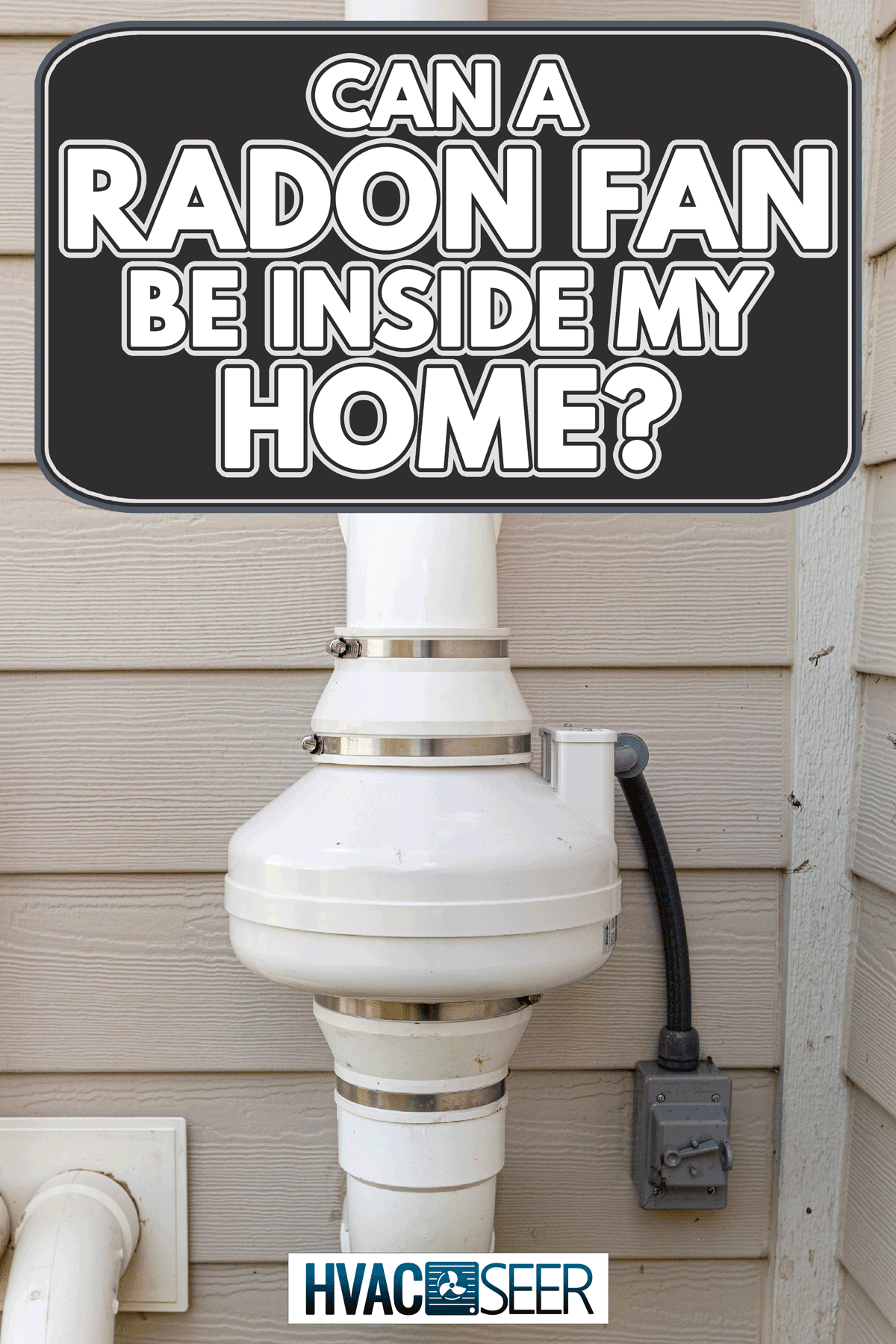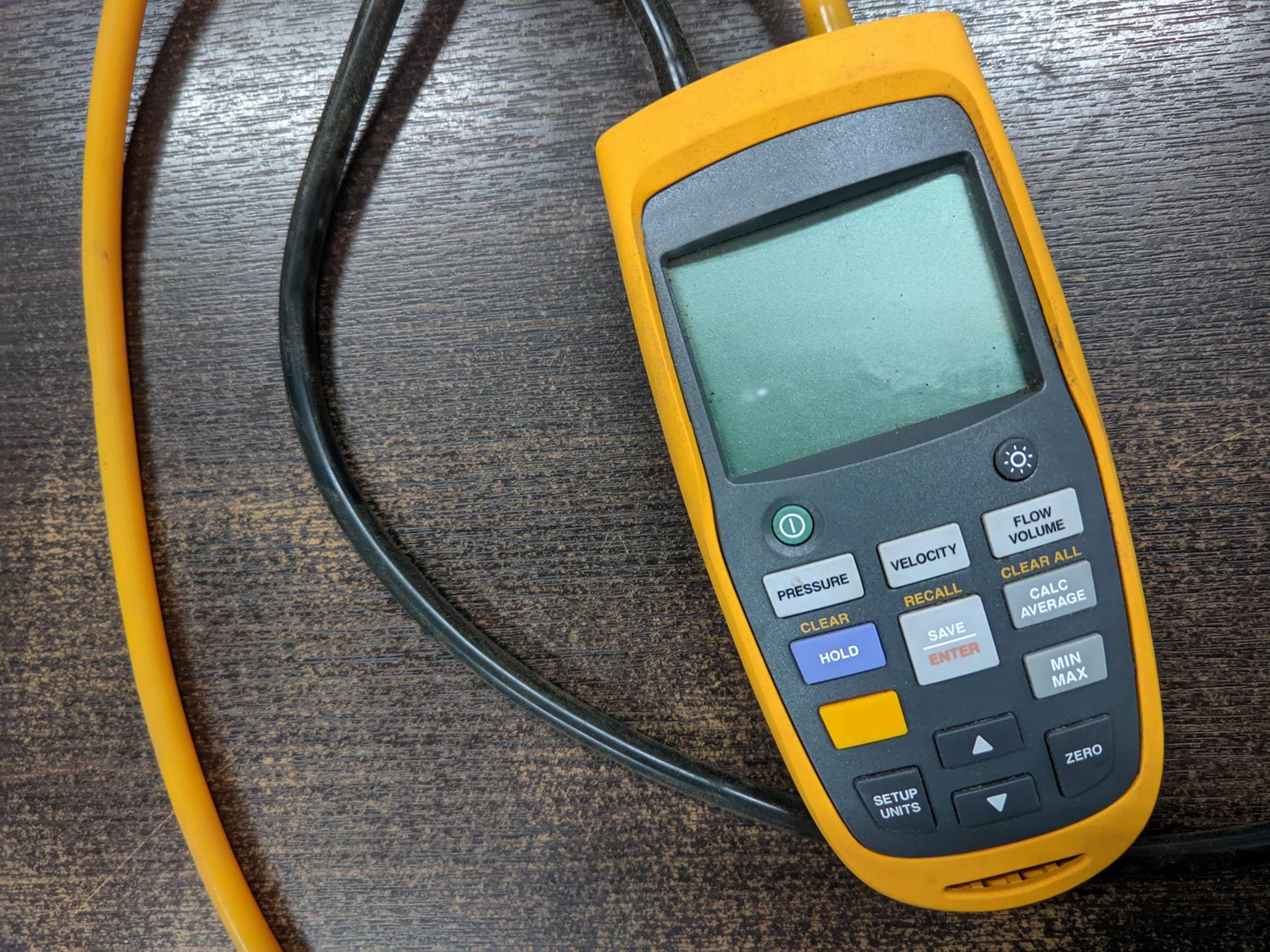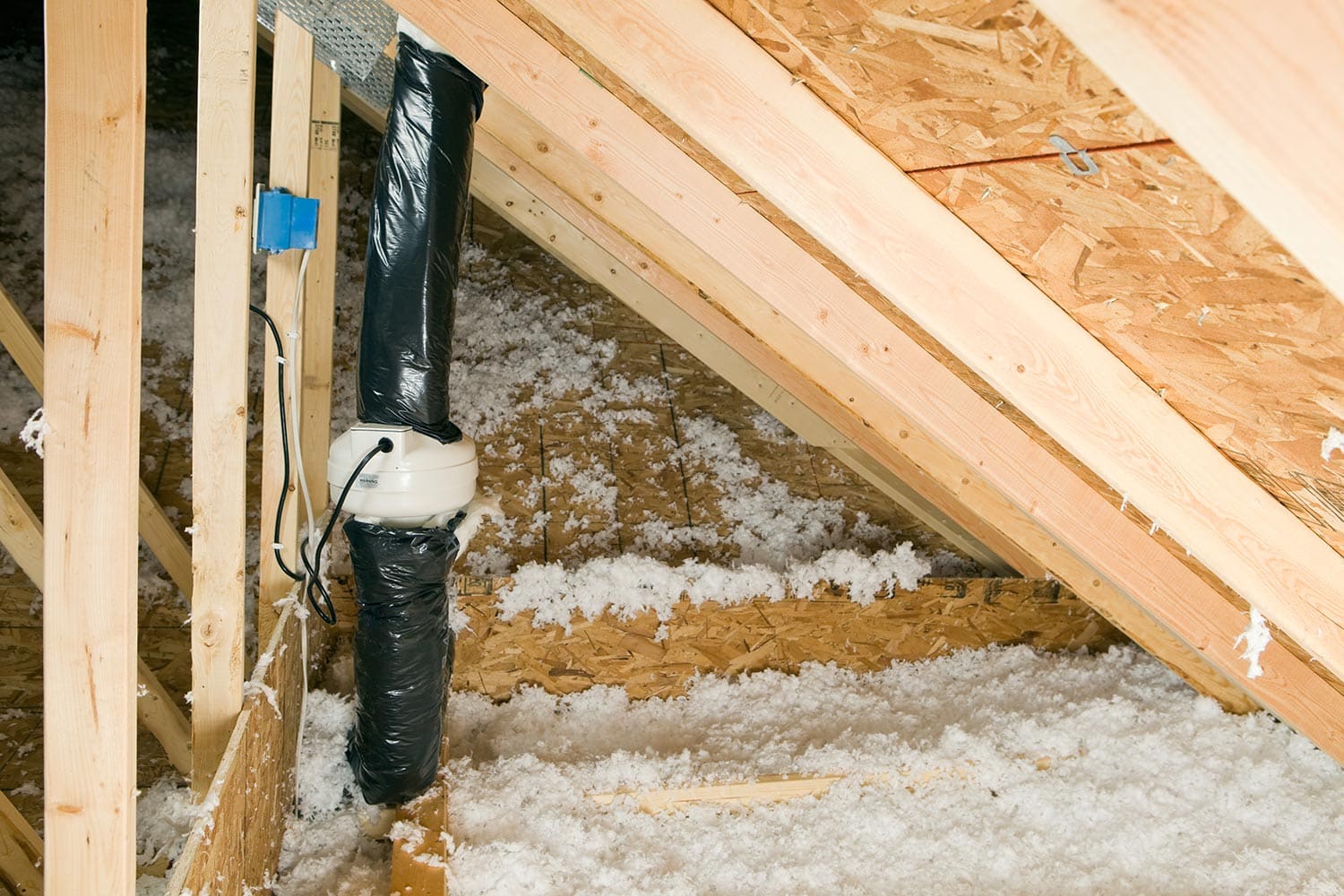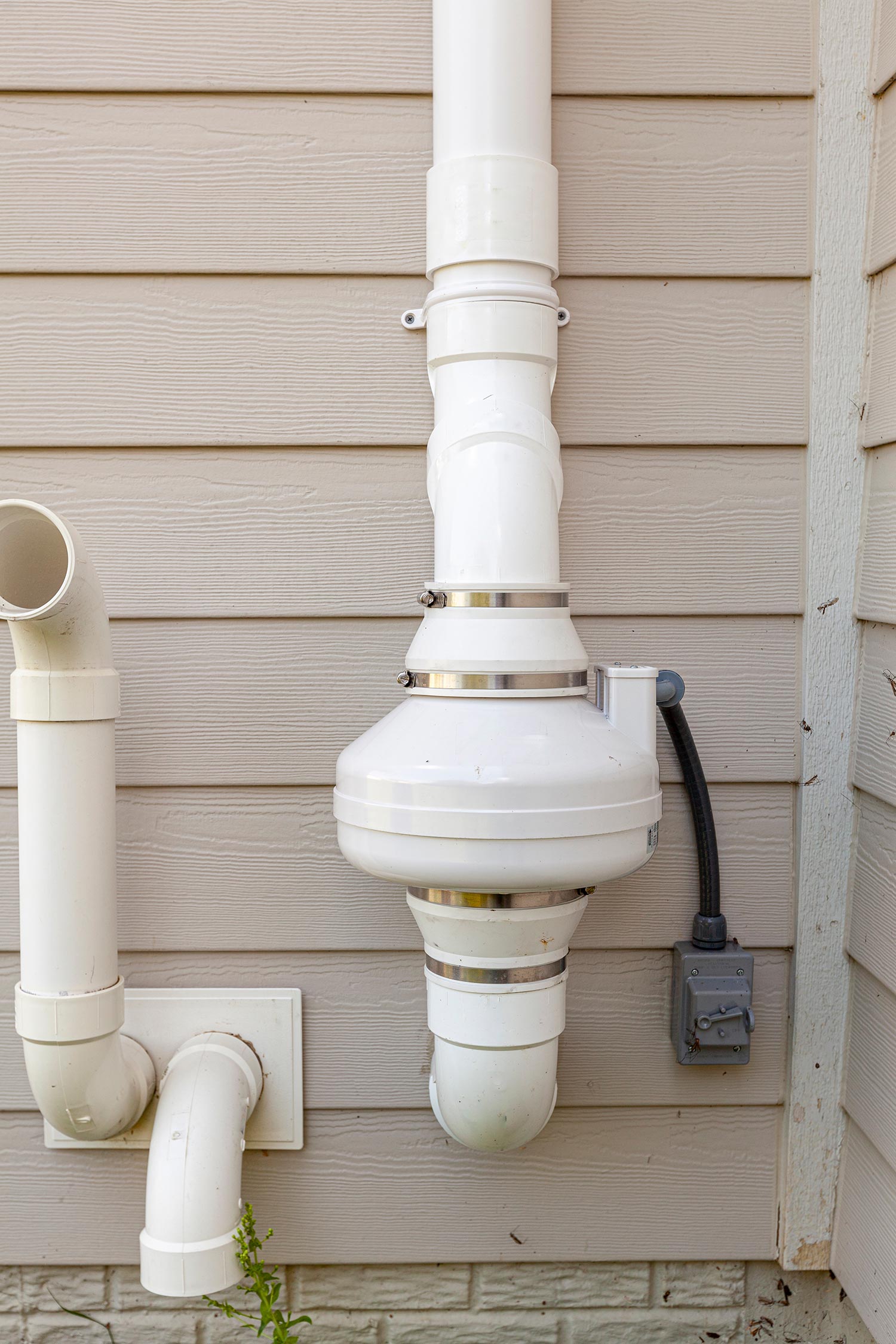Did you know that radon is right behind smoking in being a leading cause of lung cancer? For this reason, a radon fan is good to have at home to prevent radon build-up. But can you install a radon fan in your home? We've researched this topic, and this is what we learned.
A radon fan should not be inside your home, since it draws radon from the soil and can release poisonous fumes into your home. Instead, you should install the fan in an unconditioned space like the garage, an unfinished attic, or outside the home.
Read on to learn more about the radon fan. We'll discuss the best location for the fan. We will also explore if these fans are noisy and whether they should run all the time. So let's dive in.

Where Should You Install A Radon Fan?
Radon is a by-product of the disintegration of radioactive metals like radium and thorium, or the uranium in groundwater, soil, or rocks.
Because radon is radioactive, it diffuses into the air from the soil below your home. It can also seep in through the groundwater coming into the house. Consequently, people are always susceptible to it.
Radon is a primary cause of lung cancer. It is estimated that the gas results in at least 20,000 lung cancer deaths annually in the United States. As a homeowner, it would help if you took specific measures to reduce radon levels.
One such measure is installing a radon fan. The radon fan prevents radon gas from building up to dangerous levels inside your home by pulling it from beneath the house and venting it outside.

Installing a radon fan inside the home or below living areas like basements and crawlspaces is not advisable. If you mount the fan in a living space, it can release poisonous fumes into your house's interior if leakage occurs.
Radon is odorless. For this reason, you may fail to detect leakage when it occurs. You might need further tests to detect abnormal radon levels in your home. The chances that the members of your household will develop lung cancer increase as they inhale the poisonous fumes.
It would be best to install the fan outside controlled living spaces where there is plenty of airflows and where the gas will not be drawn into the vents and distributed to the rest of the house. An unrefined attic, garage, or outdoor space would be ideal.
If you live in a cold climate, installing the pipes inside rather than outside is ideal. If you run the conduit out in cold temperatures, ice can build up as condensation forms, causing the fan to stop working. Position the pipes near an exterior wall to keep them out of the way and make it easy to route outside.
In addition, a licensed radon mitigation professional should correctly design and install the radon mitigation system so that the pipes carrying radon gas vent away from windows and other openings. The professional should also check for cracks or gaps in the house's foundation and seal them.
Choosing The Right Radon Fan For Your Home
When choosing a radon fan, the most important consideration is its pressure field extension—how far the fan draws radon from beneath the home.
Generally, you determine the pressure field extension using a micro-manometer and a suction point to take specific measurements. But taking these measurements sometimes proves challenging, even for licensed radon mitigators. Your best choice is to leave the measuring to the experts.

You also need to consider your home's current square footage, the type of return system the fan will use to pull radon from beneath your home, and the current radon levels in your home. It would be best to determine the radon levels using the long-term test.
Choose a fan made from a durable material that can withstand elements such as snow and rain, especially if you intend to install the fan outside. If the fan cracks, you do not want to risk the radon gas leaking into your home.
Also, ensure that the fan is energy efficient to enable you to save money and energy while contributing to protecting the environment.
This manometer can measure differential pressure with its dual input probes. See it on Amazon.
Are Radon Fans Noisy?

Generally, radon fans are relatively quiet. If your fan makes noise, it may be defective or not installed correctly.
Causes of Noise
Poor Installation
If you use metal downspouts as the exterior exhausts in place of PVC pipes, your system will be very noisy. Using PVC pipes guarantees a quieter operation.

To reduce noise that arises from vibration, use four anti-vibration rubber couplings as opposed to only two. In addition, use rubber to insulate the clasps that reinforce the pipe on the house to minimize the vibration shift back to the building.
A radon professional should size the pipes correctly to reduce noise and enhance the system's efficiency. For example, to keep the noise at a minimum, a 3-inch pipe should move at most 34 CFM while a 4-inch pipe should move a maximum of 61 CFM.
The system can also be quite noisy if it draws unnecessary air inside. The extra air flow is often due to positioning the suction point too close to the groundwater sump pit so that too much air enters through the exterior drain tiles.
Wear and Tear
Radon fans often last from 5 to 10 years. But their efficiency deteriorates over time because they are subject to wear and tear.
The bearings that aid in lubricating the fan's motion wear out over time. As a result, it is not uncommon for the fans to become unusually loud near the end of their useful life.
To assess your radon fan's performance, use a manometer to compare the current readings to the expected figures on the sticker attached to the pipe. If the values are lower, the fan is gradually failing as it draws less air than before. It would be best to budget for a new radon fan.
Normal Operation
In cold seasons, the fan can make noise as the ice or water sloshes around in the fan. This happens when the condensate formed inside the pipes above the fan trickles down into the fan when it is freezing. But don't be alarmed when this happens, as it does not indicate a severe problem.
It is prudent to ask a certified professional to inspect your radon fan if it is making noise. The expert can diagnose and rectify the problem or advise if you need to replace the fan. They can also clean the fan blades, keeping the fan balanced, and thus reducing noise arising from vibration.
You can ask the expert to recommend the best replacement fan for your system. You should be sure that the new fan is compatible with your current system's static pressure capability and flow.
Should A Radon Fan Run All The Time?

Radon fans should continuously operate, as they constantly extract the toxic radioactive gas from beneath your home. If you switch off the radon fan, the radon levels in your home will rise to unhealthy levels within a few hours.
Because these systems are designed to run all the time, they are self-sufficient for the most part. But they will occasionally require a check-in and a tune-up to keep working optimally.
Check your system's warning device often to assess whether the fan is running as expected. It would be best to check every one to three months.
The warning device should alert you if a system failure occurs. But a contractor should check if the warning device is working well to enhance the reliability of the alerts.
Also, test the radon levels in your home every two to three years to ensure that they remain at the minimum. The radon professional can also assess your radon fan's functionality during this check-in.
Wrapping Up
If you live in a place with elevated radon levels, install a radon fan outside or in an unconditioned living space, such as a garage or attic, if the location has cold climates.
The radon fan will help control radon levels in your home, keeping you and your loved ones safe. However, installing the radon fan inside your home would be counterproductive.
Check the performance of the radon fan regularly to ensure that functionality remains at an optimum level to avoid radon poisoning. If the fan fails, you may not be able to detect radon leaks in your home since radon is odorless.
Before you go, check out these articles:

